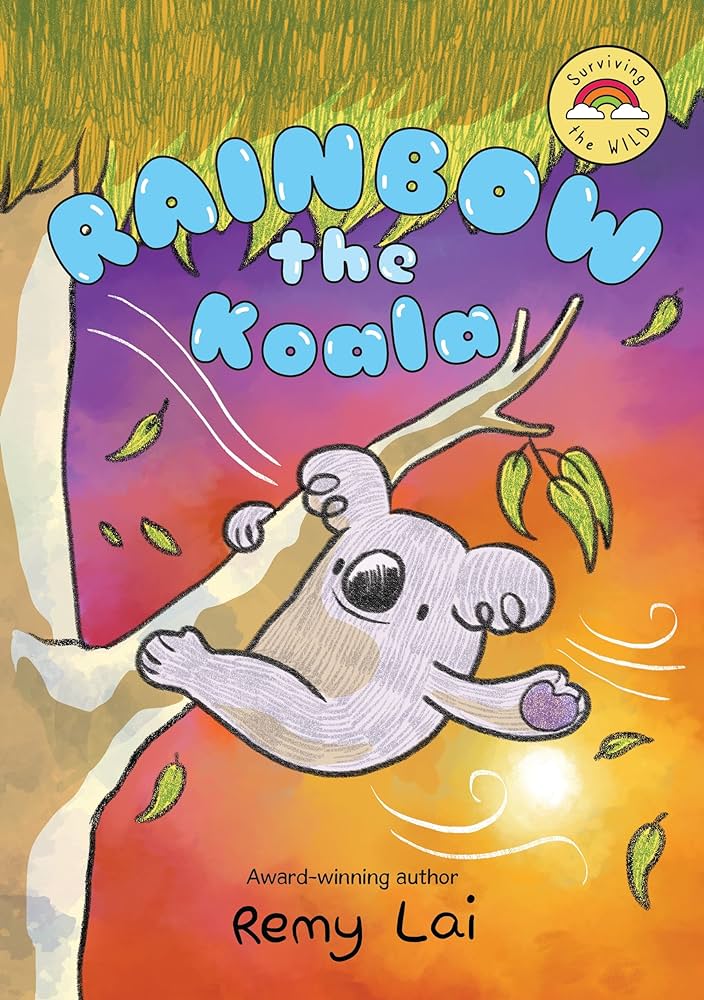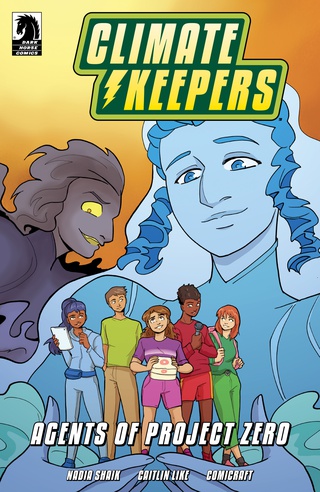“There are only about 500 Siberian tigers left in the wild. If he can avoid the poachers’ traps and guns – and if his cubs can do the same – the species may yet have a futre. But here, at the ends of the Earth – that future is far from certain” — Lions and Tigers, n. pag.
| Creator(s) | Ted Rechlin (author and illustrator) |
| Publisher | Sweetgrass Books |
| Publication Date | 2020 |
| Genre | Educational, Nonfiction |
| Environmental Themes and Issues | Climate Change, Conservation, Deforestation, Educational Nature Facts, Endangered Species, Extinction, Hunting, Poaching |
| Protagonist’s Identity | Male Siberian tiger and male lion |
| Protagonist’s Level of Environmental Agency | Level 4: Considerable Environmental Agency without Activism |
| Target Audience | Middle Grade (8-12 years) |
| Settings | The Sikhote-Alin Range in Siberia and the Maasai Mara in Kenya |
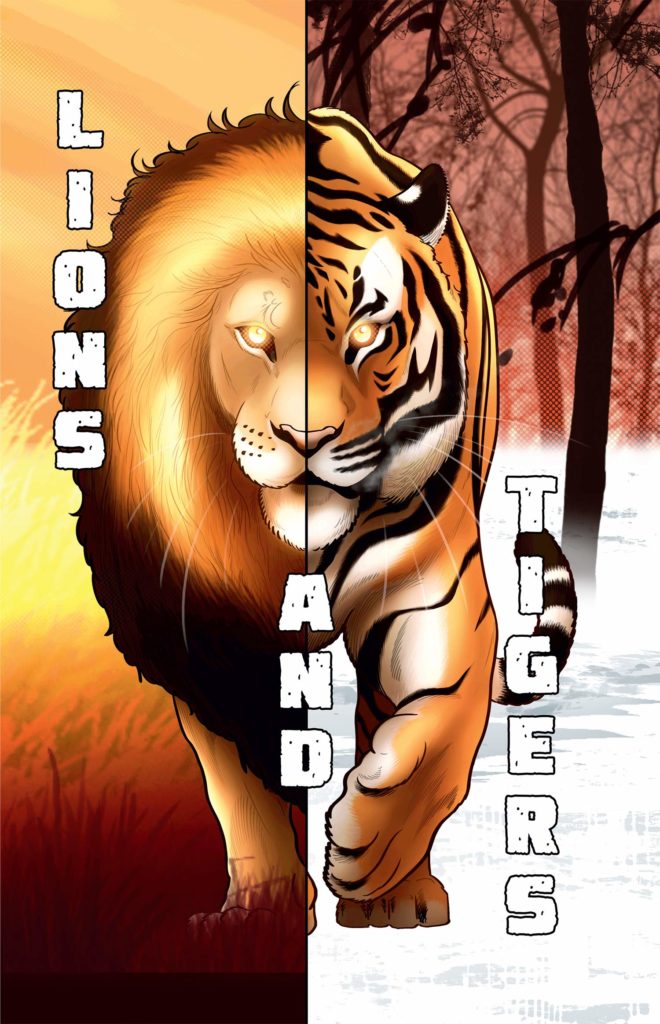
Environmental Themes
As the title suggests, Ted Rechlin’s graphic novel Lions and Tigers educates middle grade readers about the two species of apex predators, both of which currently “cling to life on tiny islands of wilderness in this human world” (n. pag.). Part One centers on a male Siberian tiger as he hunts and kills a boar and roams through his territory in the Sikhote-Alin Range in Siberia. The comic provides factual information about the Siberian tiger’s diet, evolution, and social dynamics. Additionally, Rechlin highlights human threats to the survival of Siberian tigers, writing, “Tigers once roamed vast swaths of the Asian continent. But at the dawn of the 20th century, tigers were faced with European expansion – and firearms. For all their strength, the cats never stood a chance. Now, tigers hold on in just five percent of the range they once knew. Tigers are an endangered species, and lawfully protected throughout much of their current range. Though laws have never stopped poachers” (n. pag.). The comic also criticizes traditional Chinese medicine as a significant threat to tigers, noting that poachers kill tigers to supply this thriving market.
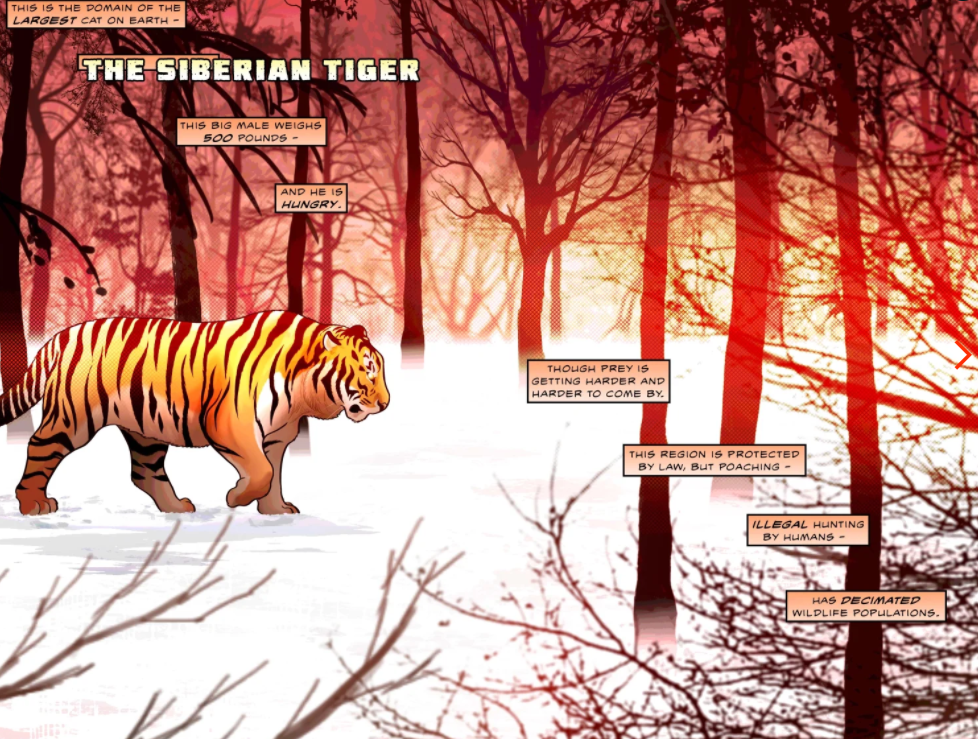
Part Two shifts to the Maasai Mara in Kenya, where a male lion battles with a band of young rival males. Like the preceding section, this part provides a general overview to the species’ diet, habits, and social structures, as well as denounces harmful human activities that threaten the lions’ survival. Significantly, the comic identifies hunting as a primary threat to lions, with Rechlin writing, “For hundreds of years, humans have considered lions the top trophy animal. Once hunted for sport by kings and pharaohs – now by rich dentists and politicians – the “king of the jungle” is always a target for those looking to prove themselves. Though lions still number more than twenty thousand across Africa, their populations are rapidly dwindling in the face of trophy hunting and poaching” (n. pag.).
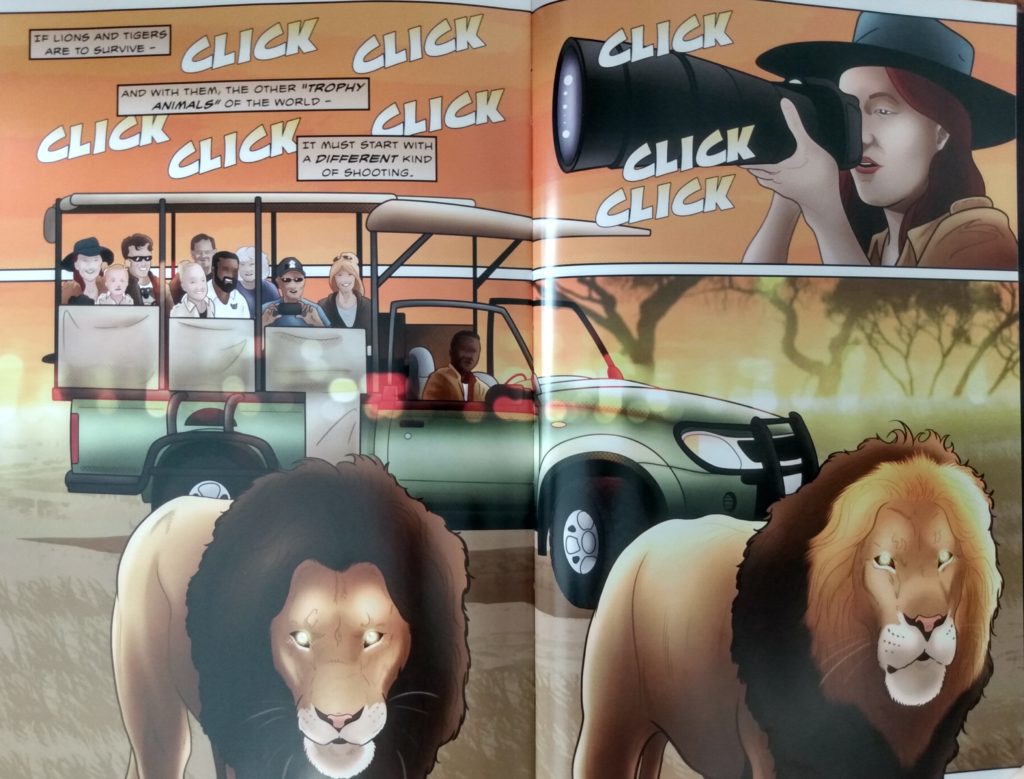
In addition to educating readers about these threats to the big cats, the comic also spotlights conservation efforts, including anti-poaching efforts and local human residents’ efforts to co-exist with the animals. However, Rechlin warns that the Earth is currently in the midst of a sixth mass extinction event caused by deforestation, over-hunting, and climate change. He concludes the comic on an optimistic note, stating, “But these events aren’t like volcanic eruptions and rocks from space. This crisis can be averted. This challenge can still be met. And that means – even when all seems lost – there is still hope” (n. pag.). However, the comic does not provide tangible suggestions for ways that young readers can engage in environmental activism to help to meet these challenges. As a result, the graphic novel is informative, but may not inspire direct action from young readers.
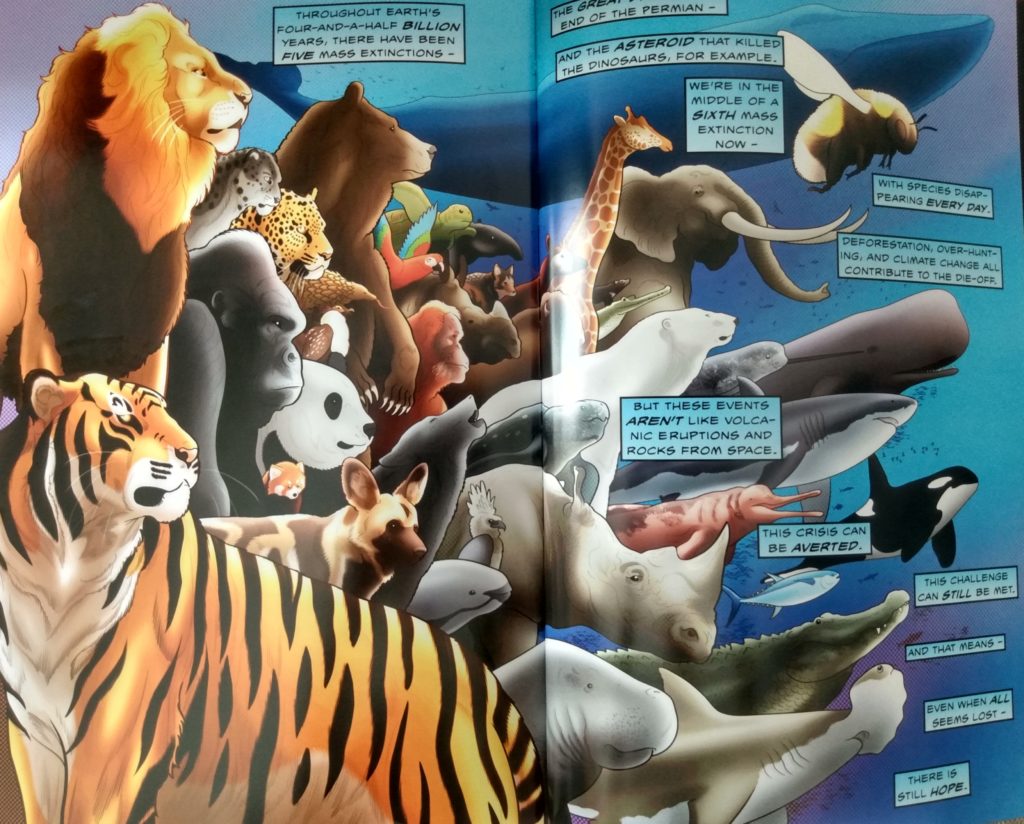
Other environmental comics created by Ted Rechlin include Bears and Howl: A New Look at the Big Bad Wolf.


